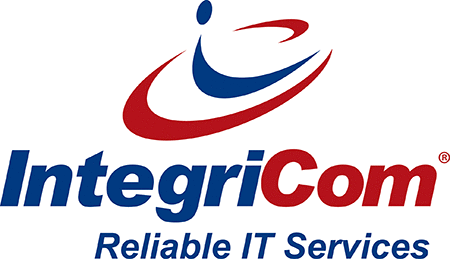Table of Contents
Nearly everyone has a smartphone these days and mobile devices have become indispensable tools for both personal and professional use. Businesses increasingly rely on mobile technology to enhance productivity and streamline operations. However, managing and securing these devices and the applications they run is a significant challenge. Two key tools in this arena are Mobile Device Management (MDM) and Mobile Application Management (MAM). Although they may seem similar, they serve distinct purposes and offer unique benefits. This blog post will explore the differences between MDM and MAM, helping you choose the right solution for your business.
 What is Mobile Device Management (MDM)?
What is Mobile Device Management (MDM)?
MDM is a comprehensive approach to managing and securing mobile devices used within an organization. This includes smartphones, tablets, and laptops. MDM solutions offer a wide range of functionalities, such as:
- Device Configuration and Provisioning: Allows IT administrators to remotely configure and provision devices, ensuring they meet the organization’s security and operational standards.
- Security Management: Enforce security policies, such as password requirements, encryption, and remote wipe capabilities, to protect sensitive data in case a device is lost or stolen.
- Monitoring and Compliance: Provides tools for monitoring device usage, ensuring compliance with corporate policies, and detecting any potential security threats.
- Application Management: Manage the installation and removal of applications on devices, ensuring only approved apps are used.
 What is Mobile Application Management (MAM)?
What is Mobile Application Management (MAM)?
MAM focuses specifically on managing the applications used on mobile devices. It provides granular control over app distribution, usage, and security without interfering with the entire device. Key features of MAM include:
- App Deployment and Updates: Allows for seamless distribution and updating of applications, ensuring users have the latest versions without needing full device control.
- App Security: Enhances app security by enabling features like app-level encryption, containerization, and data wiping. This ensures that corporate data remains secure within the app environment.
- User Access Control: Provides detailed control over who can access specific apps and data, ensuring that only authorized users can use sensitive applications.
- Data Management: Offers features to control the flow of data within and between apps. This includes restricting data sharing between corporate and personal apps to prevent data leakage.
 Key Differences Between MDM and MAM
Key Differences Between MDM and MAM
While MDM and MAM both aim to enhance mobile security and management, they do so in different ways and are suited for different use cases. Here are the key differences:
- Scope of Control:
- MDM: Controls the entire device, including hardware, operating system, and all installed applications.
- MAM: Focuses solely on managing specific applications and their data.
- Impact on User Privacy:
- MDM: Can be perceived as intrusive since it manages the entire device, including personal apps and data.
- MAM: Less intrusive, as it only manages corporate apps and data, leaving personal apps and data untouched.
- Implementation Complexity:
- MDM: Typically requires device enrollment and may involve more complex setup and maintenance processes.
- MAM: Generally easier to deploy, as it doesn’t require full device control and can be implemented on both managed and unmanaged devices.
- Use Cases:
- MDM: Ideal for scenarios where full control over the device is necessary, such as in highly regulated industries or when devices are company-owned.
- MAM: Best suited for Bring Your Own Device (BYOD) environments, where employees use personal devices for work and there is a need to secure only corporate apps and data.
Choosing the Right Solution
The choice between MDM and MAM depends on a company’s specific needs and the level of control required. For organizations with strict security requirements and company-owned devices, MDM may be the best choice. On the other hand, for businesses embracing BYOD policies, MAM provides a more flexible and less intrusive solution.
MDM and MAM are both essential tools for companies, each with its own strengths and applications. By leveraging these technologies, you can help protect your data, enhance productivity, and stay ahead in an increasingly mobile world.
 Intune
Intune
IntegriCom uses Intune as our MDM/MAM solution for a variety of reasons. Since we work mostly with Azure and M365, Intune is already integrated into our stack and our clients don’t have to pay additional subscription fees from third party vendors. Intune’s integration with Azure
Active Directory and Microsoft 365 allows for conditional access policies, which ensure that only compliant devices can access corporate resources, enhancing security. Additionally, Intune leverages the power of Microsoft Endpoint Manager, combining both traditional on-premises management through Configuration Manager and cloud-based management, providing a versatile and flexible management environment.
Intune provides comprehensive management capabilities for a wide range of devices and platforms, including iOS, Android, Windows, and macOS. This cross-platform support ensures that organizations can manage all their devices from a single, unified console, simplifying IT management and reducing administrative overhead.
Security is a paramount concern for any organization, and Intune excels in this area by offering robust data protection and compliance features. Intune enables IT administrators to enforce security policies such as encryption, password requirements, and device health checks. Its ability to separate corporate data from personal data on devices through containerization ensures that sensitive information remains secure while respecting user privacy.
Intune enhances user productivity by providing a user-friendly experience. Employees can securely access corporate resources from their personal devices without compromising security. Intune’s self-service capabilities, such as remote wipe and password reset, empower users to resolve common issues independently, reducing the burden on IT support. This combination of strong security, seamless integration with Microsoft services, and user-centric features makes Intune an excellent choice for organizations looking to implement an effective MDM or MAM solution.
Summary
As smartphones and tablets become integral to both personal and professional realms, businesses face challenges in securing and managing these devices and their applications. MDM offers comprehensive control over entire devices, from hardware to applications, making it suitable for regulated industries or company-owned devices. In contrast, MAM focuses specifically on managing and securing corporate applications and data without intruding into personal data, making it ideal for Bring Your Own Device (BYOD) environments.
Enhance Your Security with IntegriCom Managed IT Services
IntegriCom provides managed IT Services and can manage all your security needs. Please contact us for a free evaluation. We can provide a complete security assessment of your total environment and provide a remediation report and recommended support options.

